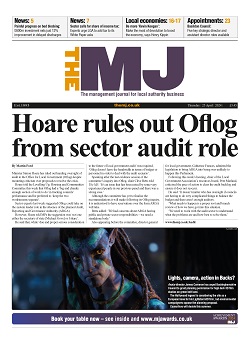There will be numerous local authority finance directors who, having looked at last week’s gloomy economists’ prognoses on the future state of the public finances, fear they might be stuck in Groundhog Day.
After a decade dominated by austerity we are back where we started with a deficit potentially even greater than its peak back in 2009/10 just before the start of the Coalition Government’s spending cuts. All that pain – and so little gain.
Just to recap. Capital Economics, a research body, and the Institute for Fiscal Studies both last week predicted that the chancellor’s massive spending splurge coupled with tax revenues dropping like a stone would create an enormous hole in the public finances. They estimated that annual borrowing, the deficit, could rise from its current 1.9% to well over 10%. The last time the deficit was that high was exactly 10 years ago after the financial crisis and it led to years of spending cuts, the negative impact of which is now being felt in services like social care, planning, prisons, health and youth provision.
What does this mean therefore for finance directors having to get some sense of direction as they look ahead to the next Spending Review – when or if it happens – and start planning budgets? Are we in for a massive dose of spending cuts as the Government tries to rebalance the public finances? The answer is most likely in the negative for a variety of reasons.
The March Budget – remember that? – sharply increased capital investment and signalled that this Government had abandoned austerity and was prepared to be flexible on fiscal targets. The economy was generally strong and tax receipts in January were the highest in 20 years. The shutting down of the economy because of coronavirus will destroy many businesses but pent-up consumer demand will make up for some of the lost GDP since the shutdown. Overall debt, predicted by Capital Economics to hit 104% of GDP against pre-virus forecasts of 77%, will remain high but interest rates are at a record low.
With Number 10 now dominating the Treasury, orthodox responses to high debt such as cutting spending are likely to be put on hold until it is clear the economy is back to normal.
One clear lesson from the virus is how much we need properly-funded public services. With a tidal wave of support for the public sector this is not the time for the Government to be revisiting Groundhog Day 2010.




